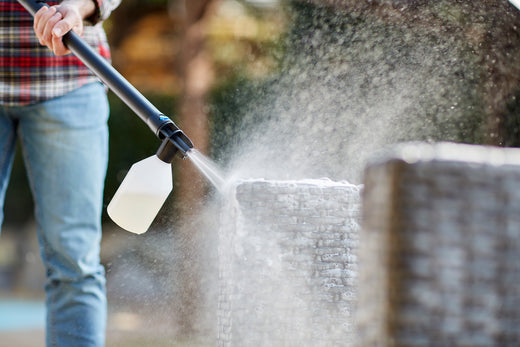Cleaning up in the garden can be a repetitive task, especially in the autumn when the leaves seem like they will never end. While rakes and leaf blowers are popular options, a wet and dry vacuum offers a versatile alternative for a tidy garden. These vacuums not only pick up leaves but often come with a blow function, giving you two tools in one! Here’s how to use a wet/dry vacuum for leaf cleanup and make the most of its features.
- Check Your Wet & Dry Vacuum’s Leaf and Blow Capabilities
Not all wet/dry vacuums are built to handle leaves, so choose a model with powerful suction and a large-capacity tank (30L) for the best results. Additionally, check for a blow function, which is on all Nilfisk models. This setting allows you to switch easily between vacuuming up and blowing leaves to pile them up or direct them out of difficult areas.
- Prepare the Wet & Dry for Leaf Collection
Before starting, check the vacuum’s filter to ensure it’s securely in place and suitable for collecting debris. Remove any dust bags designed as they’ll clog with leaves. If your vacuum has different nozzle attachments, use a wide one to cover ground quickly.
- Use the Blow Function to Gather Leaves
Start by switching the vacuum to its blow function to gather leaves into piles. The blow function is perfect for pushing leaves out from under bushes, shrubs, or tight spots where a rake can’t reach. Position the nozzle just above the ground and direct leaves toward a central area. This can save you time and energy, making it easy to vacuum up leaves in bulk once they’re gathered.
- Start Collection
Once you have put the leaves into manageable piles, we recommend using a shovel to quickly put the bulk of leaves into binbags. This will be easier than using the vacuum right away as the machine will fill up fast and require emptying too often.
- Switch to Vacuum mode
Once you have put most of the leaves into binbags, switch the Wet & Dry to the vacuum mode. Place the nozzle close to the ground and slowly work through each pile. Wet/dry vacuums are excellent for dry leaves but may require a couple of passes on damp leaves to prevent clogging. Be sure to empty the tank frequently to keep suction strong and prevent any blockages.
- Final Cleanup and Maintenance
After your garden is clean, empty and rinse the vacuum tank. Wet leaves can quickly decompose and leave residue inside, so it’s best to clean it thoroughly after each use. Don’t forget to clean or replace any filters, and store the vacuum in a dry, safe place.
Why a Wet and Dry Vacuum is Great for Leaf Cleanup
The dual vacuum and blow functions make a wet and dry vacuum a valuable tool for leaf cleanup. With powerful suction and the ability to create organized piles using the blow feature, you get a more efficient and precise cleanup. Plus, its ability to handle both dry and damp leaves makes it more versatile than a standard leaf blower.





